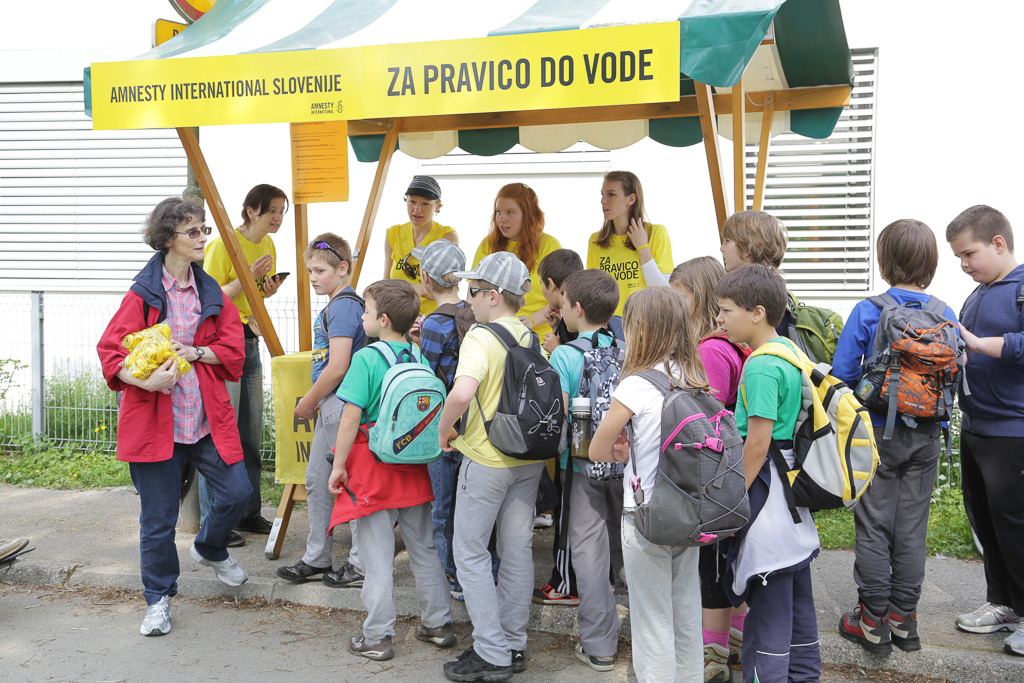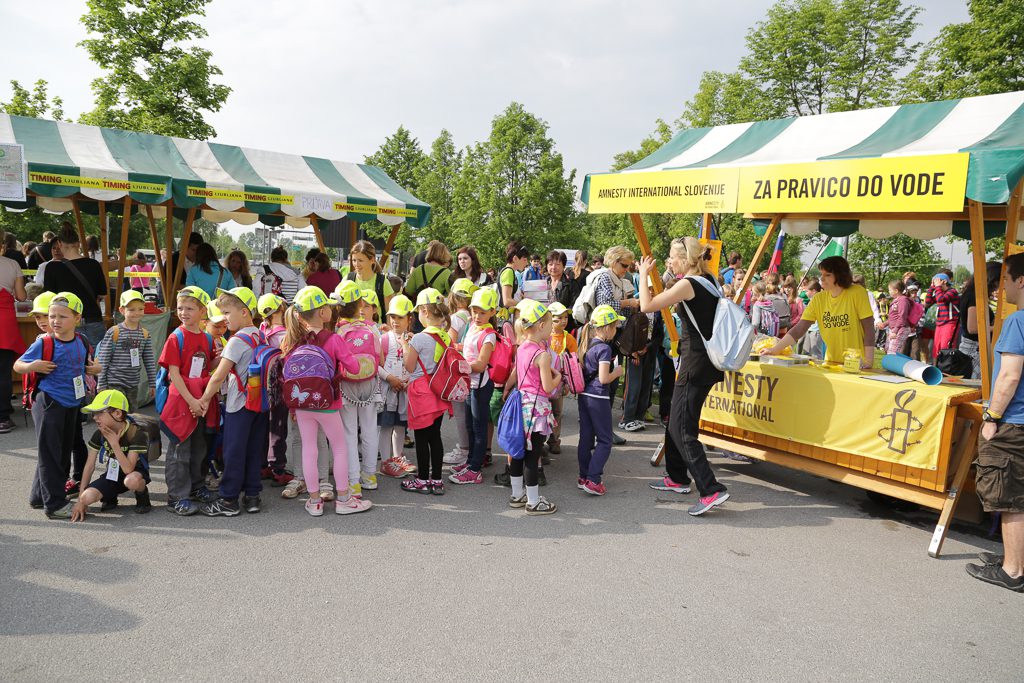Ana Cemazar, Head of Human Rights Education at Amnesty International Slovenia, explains how human rights education on the right to water, particularly for the Roma community, led to the collection of 1,700 signatures at an annual outdoor event attracting 20,000 people in Ljubljana.
Interview conducted by Emilie White, HRE Network & Communications Coordinator in the IS HRE team on 22 May 2013, online, for the International HRE Network News:
EMILIE: Hi this Emilie White with the Human Rights Education Network news. I am here with Ana Cemazar; she is the Head of Human Rights Education at Amnesty International Slovenia. Recently she has integrated human rights education activities into a huge external event in Ljubljana, Slovenia attended by 20,000 people and where her team collected over 1,700 signatures calling on the government to guarantee access to safe water without discrimination, particularly to the Roma population of Slovenia. Please do tell us about these human rights education activities and their impact.
ANA: We started with the activities three months before the event itself. We sent a proposal for a workshop to all primary and secondary schools in Slovenia. This workshop was about the right to water, about water as a human right, and focusing on Roma in Slovenia because in one part of Slovenia, in South East Slovenia, almost 30 percent of the Roma population is without access to safe drinking water. So we asked schools to deliver workshops.
We also offered to deliver some workshops ourselves and we invited a guest speaker who was the first Roma woman to become a police officer. She went there and gave lectures on how life in Roma settlements is, and about all the discrimination they faced.

We invited children to take part in a drawing competition on how they imagine a day without water. All the paintings that we collected and received were displayed during the event so we had a nice exhibition and we also asked and encouraged people who attended the event to sign the petition for our government to guarantee access to water to everyone.
EMILIE: Excellent, so tell us a bit more about all the build up to this protect, where this project came from, and how you got people involved in it.
ANA: It all started with a report that was published two years ago, it was research done in Slovenia about Roma discrimination, and this report focused on access to water and the fact that Roma are denied access to water.
This year we started working with the Education, Empowerment and Justice project which also focuses on discrimination so we combined these two things together with the event ‘Path along the Wire’. This has a symbolic meaning because Ljubljana was occupied during the Second World War and there was barbed wire around the city.
Now we have this memorial path along the wire, around Ljubljana, and since our logo also has barbed wire around it and we share the same values and ideas, we thought it would be a nice idea to combine these two things: the memorial path and walk combined with our activities for human rights against discrimination.

ANA: We managed to collect almost two thousand signatures, which is a great success for us, and these signatures will be in the beginning of June delivered to our Prime Minister and also, we will exhibit all the paintings we got from children so that all the Members of Parliament can see how children imagine a day without water and see what their opinion on the right to water is.
Emilie: Excellent so this is fantastic information and I understand you will be available for further information from anyone across the Network that wants to ask you any questions.
ANA: Of course, with pleasure.
EMILIE: Excellent, this is an excellent example of human rights education working on a campaign, building on research, combining with activism and working with youth. Thank you for going through it with us and I hope to hear more about these activities in the future.
Learn more about Amnesty Slovenia’s human rights education work! For further information, visit the Amnesty International Slovenia website
Subscribe to the Human Rights Education blog series
Header picture: Children with Right to Water wristbands at one of the four Amnesty Slovenia stands. ©Amnesty International


